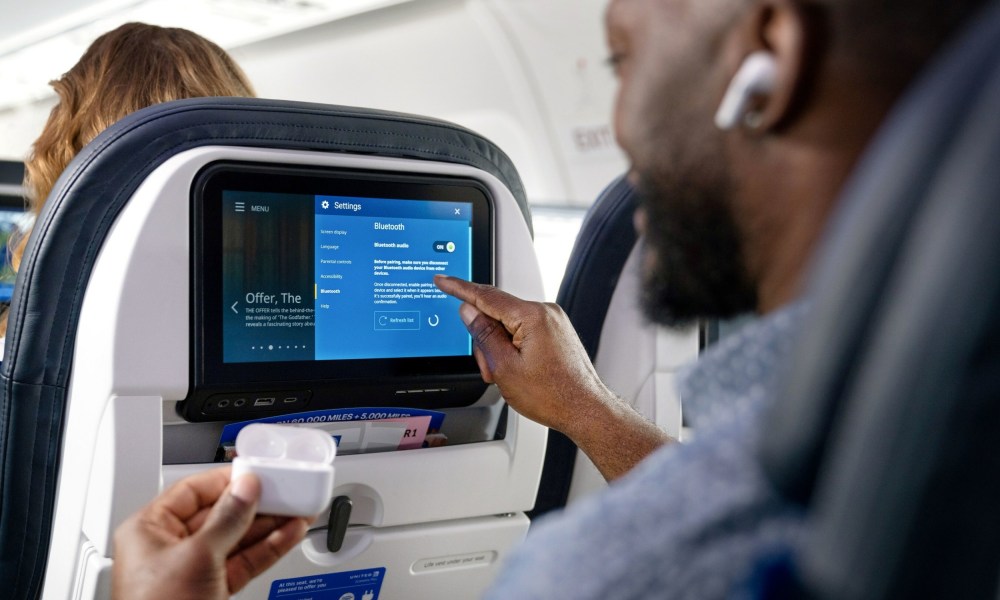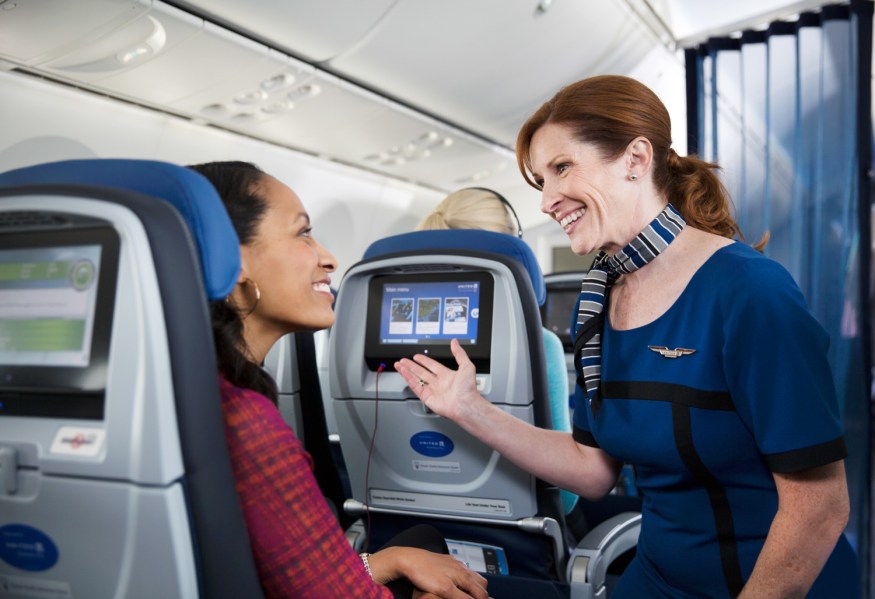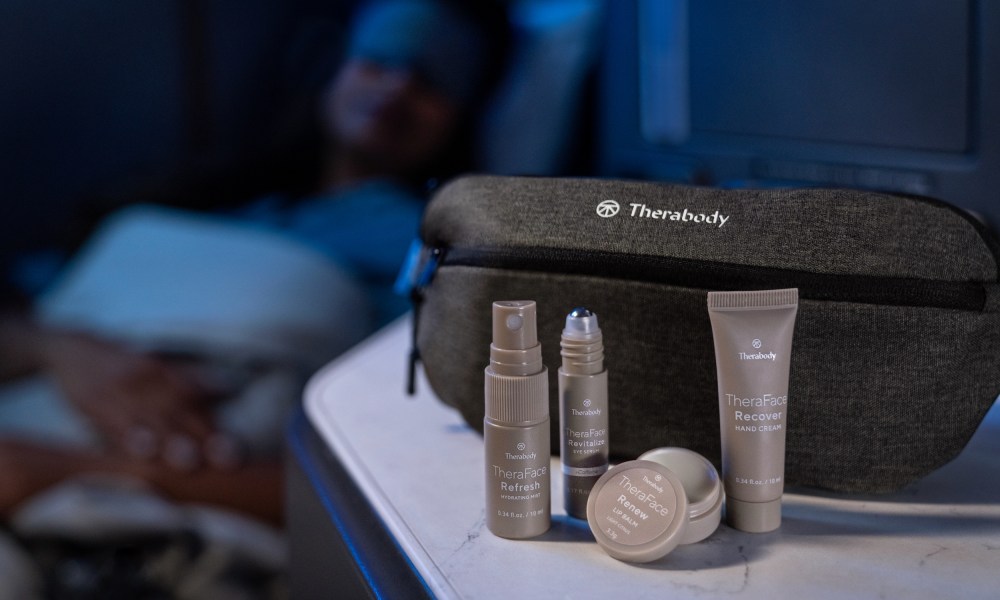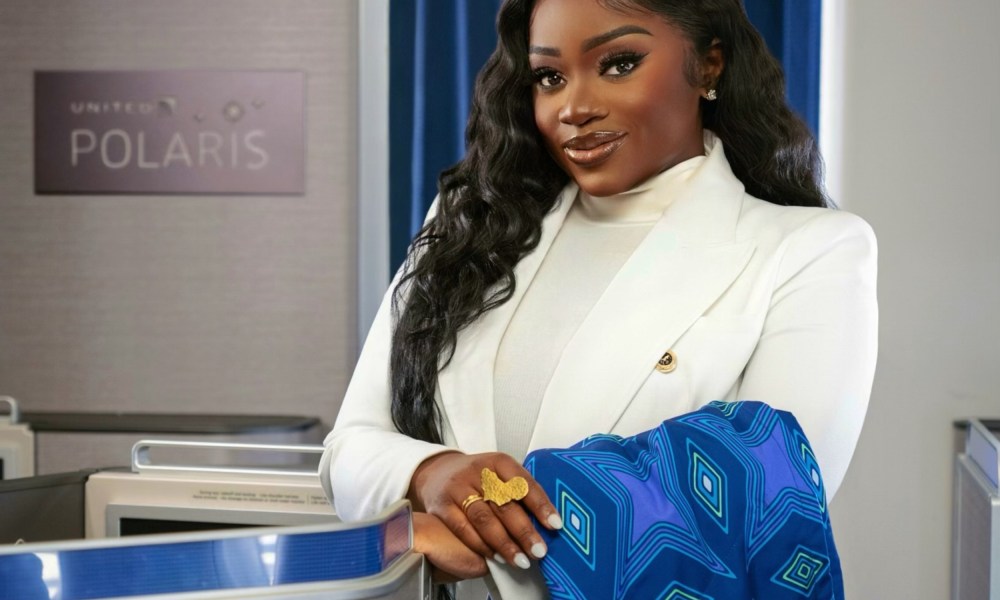As part of ‘United Next’, the airline’s plan to modernize and grow its fleet, the carrier currently has Bluetooth connectivity on more than 100 planes and expects it to be on about 800 aircraft by 2032.
In addition to seamlessly connecting to United’s new seatback screens, travelers can take advantage of other new innovative features when using AirPods Pro, including Conversation Awareness and Adaptive Audio.
Now available for all AirPods Pro (2nd generation), Conversation Awareness lowers volume when the user starts speaking, which can make it easier to communicate with a flight attendant when ordering food and beverages.

Additionally, Adaptive Audio is a new listening mode that dynamically blends Transparency mode and Active Noise Cancellation, adjusting the noise control based on the sound in a user’s environment – like the roar of plane engines.
“United was the first U.S. airline to roll out Bluetooth, and when we saw Apple’s new AirPods features, we knew it could be a game changer for our customers and our employees,” said United’s Chief Information Officer, Jason Birnbaum.
“People want to stay connected while they’re in the air, but there’s also a lot of interactions between our crew and customers – the technological combination of wireless connectivity, Conversation Awareness and Adaptive Audio result in a great experience for everyone.”

Here’s how Bluetooth pairing works onboard United’s new and retrofit planes:
-Select the Bluetooth icon from the toolbar near the bottom of the seatback screen monitor.
-Toggle Bluetooth on and ensure your Bluetooth headphones are disconnected from other devices.
-After placing them in pairing mode, select the device from your list of available devices. Enjoy your favorite TV shows, movies, podcasts, curated playlists and more without wired headphones.
For more than ten years, United has integrated Apple products across its operation to enhance the customer experience, including deploying the first paperless flight deck with iPad in 2011; rolling out more than 120,000 Apple devices, including iPhone and iPad, to United employees, connecting them to one another in real-time; Using iPad with Touch ID to get sign-off in a matter of minutes on documents that release an aircraft for departure, helping prevent delays for passengers; Adding Live Activities support for the United app on iPhone, making United the first U.S. airline to make it even easier and faster for fliers to receive timely updates and find important flight details right on the Lock Screen or through the Dynamic Island on a user’s Home Screen.

In addition to Bluetooth connectivity, United’s new and retrofit planes also include several customer amenities, technological innovations and fuel efficiency benefits.
For narrowbodies, these include seatback screens in every seat, enough overhead room for everyone’s carry-on and fast Wi-Fi. And each new widebody features United Polaris business class, where customers get their own pod with lie-flat seats and 16-inch seatback screens.
The airline recently announced new business class amenity products and services from Therabody and Saks Fifth Avenue.

Plus, United’s new aircraft will continue to reduce United’s per-seat carbon emissions compared to the older models they replace, in line with the airline’s expectation to be net zero by 2050 by reducing greenhouse gas emissions 100% without relying on traditional carbon offsets.
According to Boeing, the 787 Dreamliner contributes up to a 25% improvement in fuel efficiency and lower carbon emissions per seat compared with the airplanes it replaces and according to Airbus, the A321neo brings a 50% noise reduction and more than 20% fuel savings and CO2 reduction compared to previous generation single-aisle aircraft.
United expects that 75% of its fleet will be new-generation by 2030.